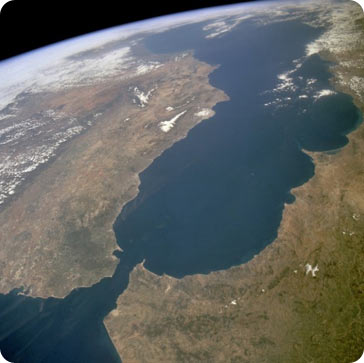180610-mediterranean.jpg

The Mediterranean Sea. Credit: NASA
Five and a half million years ago, the Mediterranean Sea was little more than a giant hole in the ground. Cut off from the Atlantic by a rock wall across the Strait of Gibraltar, it dried up. The little water that remained was so salty that almost nothing could live in it, and its surface was perhaps a mile or more below the level of the Atlantic.
But soon after that, things began to change. A recent study says the Mediterranean refilled first with a trickle, then with one of the greatest floods our planet has ever produced.
There’s little doubt that the sea refilled about five and a third million years ago. But just how it happened has remained unclear.
Late last year, researchers in Spain wrote that most of the basin filled up in a hurry.
The researchers studied the layers of rock beneath the bottom of the Mediterranean. They found a wide, shallow channel from Gibraltar toward the middle of the basin. Computer models showed that the channel likely carried a massive flood.
The flood began with a trickle -- small waterfalls that cascaded over the rock wall. Over thousands of years, they weakened the top of the wall enough that it washed out, creating a wide but shallow “ramp” from the Atlantic.
Water plunged down the ramp with an ear-splitting roar -- a thousand times as much water as today’s Amazon River. It filled about 90 percent of the Mediterranean in less than two years.
The water brought new life -- eventually turning the Mediterranean basin into the cradle of civilization.

